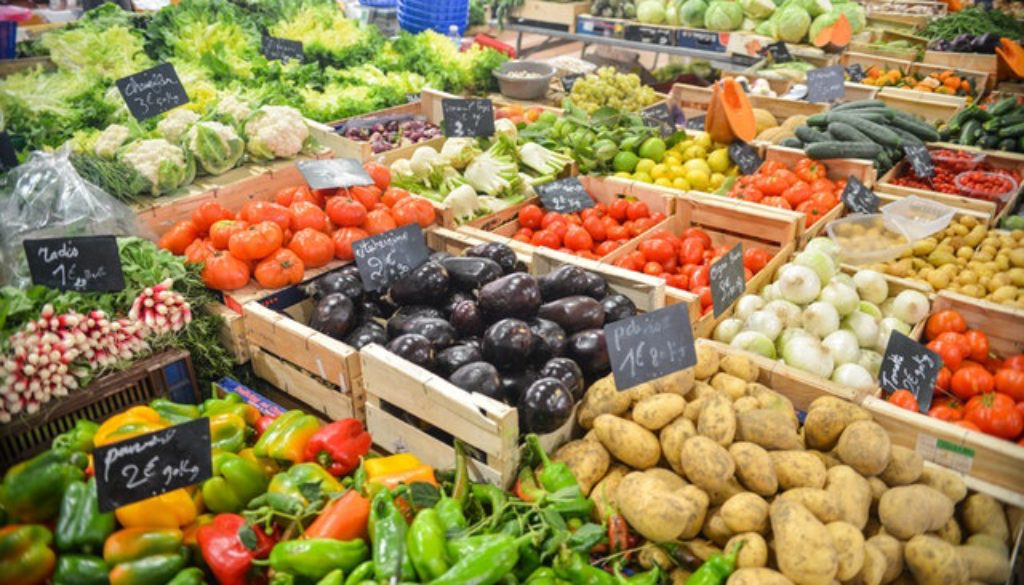Lactation Nutrition: 4 Simple Guidelines
As a mom you may be wondering what to eat now that your baby is here. What types of food will nourish your baby, keep yourself healthy and strong and shed the extra pounds that you gained during your pregnancy?
As a Midwife and International Board Certified Lactation Consultant this is a subject that I am asked about so often, both in the office and on social media. During pregnancy you heard lots of talk about what to eat, but not too much instruction is given after delivery. Most women do not have a visit with their health care provider until that brief six week check up.
Interestingly, I learned very little about nutrition while I was studying to be a Certified Nurse Midwife and even less in my training as a Lactation Consultant. Unfortunately, my doctor colleagues didn’t learn much on this topic either, a fact that may leave you feeling unsupported as you plan your meals in the post partum period.
In “medical” education I learned that there was very little difference in mother’s milk caused by diet and that what food wasn’t that important for milk supply or health of parent or baby. I have realized through my many years of experience caring for families, that this is not true- of course what we eat affects our health and our milk supply. It can influence the quality of our milk and how our infants react to drinking it. We can nourish our children through our milk, but there can also be sensitivities that interfere with digestion or cause reactions in infants. And for sure what you eat while breastfeeding can impact your infant’s health, your weight, your future health status and how you feel on a daily basis.
I hear so many myths surrounding the topic of breastfeeding and mom’s diet. I also know how difficult it can be to be a parent at this stage in your life- everything is new, you are exhausted, you may be recovering from a traumatic or surgical birth and you are doing your best to learn how to best care for your child. My goal is to give you real information that you can use to guide your food choices in order for you and baby to thrive.
To sort all of this out for you, I have outlined 4 simple “Lactation Nutrition” guidelines.
Lactation Nutrition: 4 Simple guidelines
1. Goal: Wellness (not weight loss)
When we think of diet, we think weight loss. I would like to turn that around for you. Let’s think of diet with health as a goal, and in doing that, you will achieve the weight that will allow your body to perform at its optimal level- helping you to feel your best and have a robust milk supply.
In the past, you may have used diets with very low daily calories in order to lose weight. Strict calorie restriction is not recommended during breastfeeding. It may decrease your supply and sap your energy level at a time when you need it to recover and care for yourself and your baby. In general, I don’t advise any women to use this method. Counting calories is no fun and rarely leads to maintained weight loss. Instead, I advise you to eat with the goal of food that nourishes you and makes you feel satisfied and refreshed. I know, that cookie might make you feel good for a minute, but that isn’t going to last. Look for nourishment. If your diet is filled with mostly real, whole food and doesn’t include foods with empty calories, you will feel well, optimize your milk supply and slowly and safely lose weight.
What do I mean by nourishing foods? Keep reading…
2. Eat real food, mostly plants, not too much
Ever since I heard this phrase by Michael Pollan, it’s been one of my favorite sayings.
Real, plant-based foods carry information for our bodies in the form of fiber, fats, carbohydrates, proteins, vitamins and other nutrients. Avoid foods that are empty calories or as my friend and colleague Dr. Aviva Romm calls them- “non food” junk. They won’t give your body the messages to perform at its best. The key is to select whole, fresh, unprocessed foods rather than to buy pre-packaged foods that have been manufactured to be convenient. Eat foods without a label or with an ingredient list whose names that you can pronounce.
Eat mostly plants- Plenty of vegetables (8-10 servings per day) all colors and shapes and forms- raw and cooked. Myth buster- broccoli doesn’t cause gassy babies! Most nurslings are very happy when their moms eat veggies. Include broccoli, cauliflower, spinach, kale, carrots, beets, squashes, cabbages, asparagus, potatoes, string beans, eggplant, etc.
Fruits are important, although not in the same amounts as veggies. My favorites are berries because they are low sugar and loaded with phytonutrients. Eat the whole fruit, not just juice. Avoid store bought juices which can be high in sugar. Frozen blueberries make a great summer snack.
Eat some form of protein with every meal. This can be plant or animal based and should be complementary, not the “main event” on your plate. Focus on organic, grassfed, lean meats. Eggs should be from organically fed, pastured chicken. Fish should be low mercury and mostly wild caught.
Fats are important for milk supply and energy. Not all fats are created equal- avoid transfats and saturated fats which are hidden in processed foods. Examples of ideal fats are avocado and olive oil.
Carbohydrates are vital for a lactating mom. Low carb, paleo and “keto” diets are not designed for breastfeeding. Unless you have a specific health reason for avoiding certain grains (such as celiac or gluten sensitivity), including them in small quantities is optimal for keeping hormones balanced and energy levels high. Look for unrefined, complex and whole grains. Oatmeal seems to increase supply for some women and is any easy, make ahead meal.
Dairy is the most popular food elimination in nursing moms. Although some moms can safely include it, it seems to be the culprit of many adverse reactions in our nurslings. In fact, for about half of the US population, dairy causes inflammation, skin break outs, or gastric upset. If you tolerate dairy, and baby doesn’t have an obvious reaction, choose full fat and always organic forms. If you are questioning if symptoms in baby are being caused by dairy, remove for a week or two and see if there is any change- then reintroduce and again, look for symptoms. If no differences, then dairy may not be the cause, but I recommend limiting amounts of this food group.
Beans, legumes, nuts, and seeds are great sources of protein, healthy fats and carbs. They are great for between meals or when you have not time to prepare a meal. Some peanut butter spread on apple slices can be satisfying. Peanuts, almonds, walnuts, pecans, pumpkin seeds, sunflower seeds, sesame seeds are all fantastic snacks or sprinkle-ons for salads. Of course, avoid these if you have a history of nut allergy.
Fermented foods such as pickled veggies, miso, kefir and yogurt (coconut yogurt if you can’t have dairy) round off the diet and are encouraged while breastfeeding as long as you don’t have any known intolerances to these. Kombucha isn’t my favorite recommendation in this category due to high sugar and possible alcohol content. But other ferments contribute to strong gut flora which maintains our overall health.
3. Avoid toxins in food and other places (eat as organic as possible)
Not just what we eat, but what we are getting with what we eat is key. The goal here is to reduce exposure to toxicants such as pesticides, herbicides, PCBs, heavy metals and plastics. These chemicals act as endocrine disruptors and neurotoxins while contributing to immune disruption, obesity, cancers and diabetes.
Organic choices are vital at this stage of our lifecycle. A great resource for lists of foods that are highest in pesticides (need to be organic) or lowest (you can get away with non-organic) is the Environmental Working Group. They also have resources to select body products, household cleaners, cosmetics and other items that can be points of exposure in our modern world.
In general, there are some foods to avoid during pregnancy and while breastfeeding. These are raw sushi, high mercury fish, raw fish or meat, unpasteurized dairy, large amounts of rice and concentrated rice products in protein bars and powders, hydrogenated (processed) oils, added sugar, artificial sweeteners, refined white flour, artificial colors, preservatives and additives, genetically modified foods and “non-food” processed junk foods.
Water should be filtered and you should drink to thirst, up to about half of your body weight in ounces (70 ounces/day if you weigh 140 pounds, for example).
To reduce environmental exposures to toxins, change to glass or stainless steel water bottles, avoid plastic food packaging and storage containers, never microwave in plastic, limit medications, chose home furnishings without flame retardants, and don’t cook with teflon or other non-stick pots and pans. This is also a good time to carefully consider body products for toxic ingredients. Review the labels of your soaps, shampoos, lotions, that you use on yourself and your children. Environmental Working Group has resources for this too.
4. Prepare ahead of time
In my opinion, as a women who has raised seven children, always either working, attending school or both, preparation is key to a healthy lifestyle. I find it almost impossible to make good food choices when I’m hungry and don’t have anything ready to eat and many of my patients share this as their biggest obstacle. Plan your food shopping before you get to the store. Batch cook when you have time and make twice as much and freeze or refrigerate half of it before serving your meal. For example, today I made a frittata for breakfast, filling my large cast iron skillet with veggies, pouring six eggs over the top. I ate one slice and stored the rest. Now I have breakfast for another day or so, or I can repurpose slice over a salad for lunch or dinner. Use crockpots to make large amounts of soup or sauce and freeze some for next week. Roast a large pan of veggies in the oven so that you always have a veggie side dish. Mix up a salad twice as big as you will eat and then next time it is already made. Grill twice as many chicken breasts as you need for a meal to toss the leftovers in that salad tomorrow. I think you get the picture. Let’s not forget snacks- cut up carrots and celery, mix nuts together, have some dark chocolate handy for emergencies (high in magnesium!), and keep the foods out of the house that you really don’t want to eat and may grab when you are desperate, tired and hungry.
Further assistance:
I hope that you find these hints helpful. Below are some links to explore. If you would like a private consultation, for more personalized and in-depth wellness or nutritional counseling, contact the office at 917-725-1791. Looking forward to meeting you!






